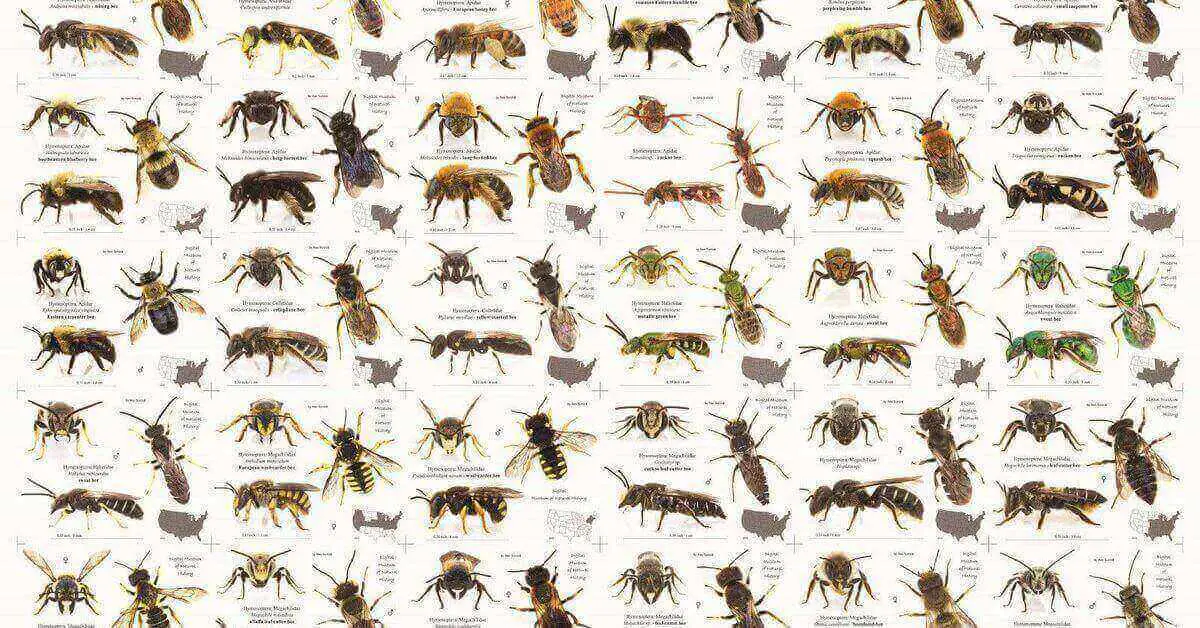In this comprehensive guide, we will explore various aspects of queen carpenter bees, including their lifespan, size, behavior, nesting habits, identification, mating habits, sting, and life cycle. So, let’s dive into the intriguing world of queen carpenter bee and uncover the secrets of these remarkable insects.
Queen Carpenter Bee Lifespan
The lifespan of a queen carpenter bee is an important factor in understanding their lifecycle and reproductive capabilities. On average, a queen bee can live for about one to two years. However, their lifespan can vary depending on various environmental factors and the availability of resources. It’s worth noting that the queen carpenter bee’s lifespan is longer than that of the worker carpenter bee, which we’ll explore in detail later.
Queen Bee Size
Queen carpenter bees are the largest among the carpenter bee species. They can reach a size of around 1 to 1.5 inches in length. Their impressive size distinguishes them from other carpenter bees, making them easily recognizable. The queen carpenter bee’s large size is an adaptation that allows them to fulfill their role as the primary reproductive member of the colony.
Queen Behavior
Queen carpenter bees exhibit intriguing behaviors that contribute to their survival and reproductive success. These bees are solitary insects and don’t form large colonies like honeybees. Instead, each queen carpenter establishes her own individual nest. They are active during the day and can be seen buzzing around flowers and plants in search of nectar and pollen. Queen carpenter bees are also known for their impressive pollination abilities, making them valuable contributors to the ecosystem.
Carpenter Bee Nest

The queen carpenter bee nest is an essential part of their lifecycle. Unlike honey bees that live in hives, queen carpenter bees create nests by burrowing into wood. They prefer softwoods such as cedar, pine, and redwood. The queen carpenter bee excavates tunnels inside the wood, creating chambers for laying eggs and storing food. Over time, these tunnels can extend several feet deep into the wood, forming a complex network of galleries.
Identification
Identifying queen carpenter bees is relatively straightforward due to their distinct physical characteristics. As mentioned earlier, queen carpenter bees are the largest among the carpenter bee species, reaching lengths of 1 to 1.5 inches. They have a shiny black exoskeleton with sparse hair covering their body. Another distinguishing feature is their large and powerful mandibles, which they use for excavating nesting tunnels.
Related Articles:
- Bees and Flowers Symbiotic relationship.
- Red-tailed Bumble Bee Characteristics & Behavior.
- Alkali bee Biography & Identification
Queen Bee Mating Habits
Queen carpenter bees have unique mating habits that contribute to their reproductive success. After emerging from their pupal stage, the young queens embark on a mating flight to find a suitable mate. Male carpenter bees, also known as drones, compete for the opportunity to mate with the queen. The successful male will mate with the queen in mid-air, and the queen will store the sperm in her body for future use. The queen carpenter bee then establishes her own nest and begins laying eggs.
About Queen Bee Sting
Contrary to popular belief, queen carpenter bees are not aggressive and are unlikely to sting humans unless provoked or threatened. However, like all bees, they are equipped with a stinger and are capable of stinging if they feel their nest or offspring are in danger. It’s important to exercise caution and avoid disturbing queen carpenter bee nests to prevent potential stings. If stung, it’s advisable to remove the stinger promptly and apply appropriate first aid.
FAQ’S
Yes, queen carpenter bees are capable of stinging, but they are generally non-aggressive and sting only when they feel threatened.
Queen carpenter bees have an average lifespan of one to two years, although this can vary depending on environmental factors.
Yes, queen carpenter bees are beneficial pollinators. Their activities contribute to the reproduction of various plant species, making them important for ecosystem health.
Queen bees are larger than other carpenter bee species and have a shiny black exoskeleton. Their distinctive size and appearance make them easily recognizable.
Yes carpenter bees have queen which lay eggs and make new youngs.
Conclusion
Queen carpenter bees are remarkable insects with unique characteristics that set them apart from other bees. Their large size, distinct behavior, and solitary nesting habits make them fascinating subjects of study. As valuable pollinators, queen carpenter bees play a vital role in maintaining ecosystem balance. By understanding their lifespan, size, behavior, nesting habits, identification, mating habits, sting, and life cycle, we can develop a deeper appreciation for these incredible creatures.




